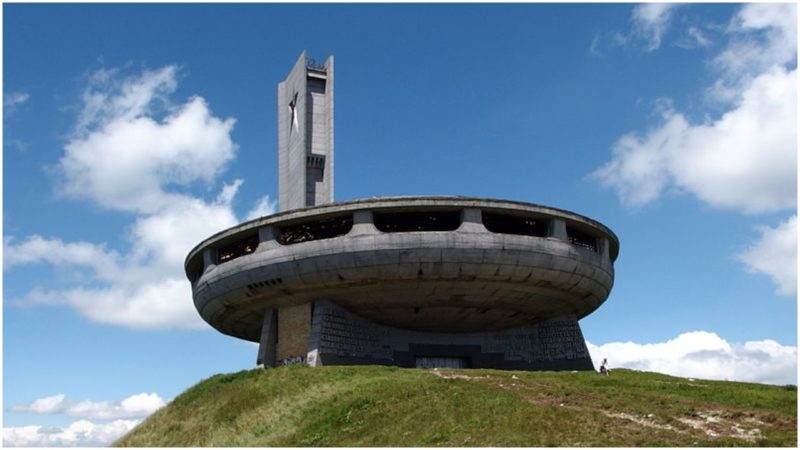Located at the historical peak of Buzludzha in the Central Stara Planina, Bulgaria stands the Buzludzha Monument.
A magnificent piece of architecture built by the Bulgarian communist regime to commemorate the events in 1891 when the socialists led by Dimitar Blagoev assembled secretly in the area to form an organized socialist movement, with the founding of the Bulgarian Social Democratic Party, a forerunner of the Bulgarian Communist Party.

This saucer-shaped monument rises to a height of 107m and was designed by the architect Georgi Stoilov and more than 60 Bulgarian artists collaborated on the design of murals for the site.
Construction began in 1974 and thousands of ‘volunteers’ were involved in the construction process, which took almost seven years to complete. It was built at a cost of 14,186,000 leva (€7 million).



The peak itself was the place of the final battle between Bulgarian rebels led by Hadji Dimitar and Stefan Karadzha and the Turks, in 1868. At one time, the Buzludzha Monument was the most celebrated monument dedicated to the sociopolitical movement of communism.
Inside the hall, mosaic portraits glow in shades of bronze and maroon. Large images of Lenin and Marx looked over the arena built for state functions and celebrations.


However, Bulgarian Communism came to an end in 1989, and immediately afterward, the headquarter came into disuse. In 1991 the monument, which still belonged to the ex-communist party, was ceded to the state and was abandoned, looted and left to self-destruction. Abandoned for decades and no longer maintained by the Bulgarian government, most of the artwork has been removed or destroyed, but the concrete structure still stands against the elements.
